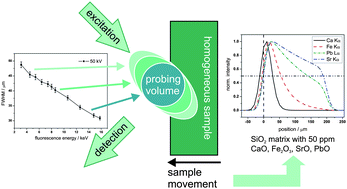A compact 3D micro X-ray fluorescence spectrometer with X-ray tube excitation for archaeometric applications
Abstract
In this work, the applicability of a new 3D micro X-ray fluorescence (3D Micro-XRF) laboratory

* Corresponding authors
a
Institute for Optics and Atomic Physics, Technische Universität Berlin, Hardenbergstrasse 36, Berlin, Germany
E-mail:
im@atom.physik.tu-berlin.de
Fax: +49 30 314 23018
Tel: +49 30 314 79057
b BAM Federal Institute for Materials Research and Testing, Unter den Eichen 87, Berlin, Germany
c Institute for Scientific Instruments GmbH, Rudower Chaussee 29/31, Berlin, Germany
In this work, the applicability of a new 3D micro X-ray fluorescence (3D Micro-XRF) laboratory

 Please wait while we load your content...
Something went wrong. Try again?
Please wait while we load your content...
Something went wrong. Try again?
I. Mantouvalou, K. Lange, T. Wolff, D. Grötzsch, L. Lühl, M. Haschke, O. Hahn and B. Kanngießer, J. Anal. At. Spectrom., 2010, 25, 554 DOI: 10.1039/B915912F
To request permission to reproduce material from this article, please go to the Copyright Clearance Center request page.
If you are an author contributing to an RSC publication, you do not need to request permission provided correct acknowledgement is given.
If you are the author of this article, you do not need to request permission to reproduce figures and diagrams provided correct acknowledgement is given. If you want to reproduce the whole article in a third-party publication (excluding your thesis/dissertation for which permission is not required) please go to the Copyright Clearance Center request page.
Read more about how to correctly acknowledge RSC content.
 Fetching data from CrossRef.
Fetching data from CrossRef.
This may take some time to load.
Loading related content
